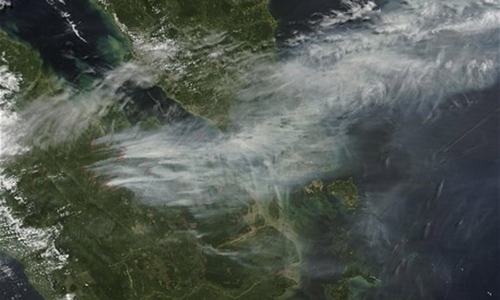In an attempt to combat severe smog levels in Lahore, the Punjab government is considering the use of “artificial rain” later this month as a measure to ease the smog situation in the provincial capital, it emerged on Friday.
Artificial rain, also known as cloud seeding, is a weather modification technique that aims to increase precipitation from clouds by dispersing substances, typically silver or potassium iodide, into the air to provide a surface for water vapour to condense onto. The increased condensation leads to the formation of larger water droplets that eventually fall as rain.
Punjab’s interim Environment Minister, Bilal Iqbal, chaired a meeting today to explore an innovative approach to addressing the persistent smog issue. The discussion took place in the wake of Lahore reclaiming the top spot in the global pollution ranking on Thursday, with residents enduring unhealthy air quality levels throughout the entire day.
According to a statement issued by the provincial ministry, a consultation meeting was conducted to consider the feasibility of artificial rain.
The minister instructed the formation of a working group to supervise the initiative for artificial rain by Nov 28 or 29.
He mentioned that the working group had been assigned the responsibility of evaluating measures to facilitate the deployment of aircraft for artificial rain.
The minister also stressed the crucial necessity of cloud presence for the successful execution of “artificial rain.”
Caretaker Education Minister Mansoor Qadir, present at the meeting, asserted that the working group would thoroughly analyse all facets of the initiative and their ultimate recommendations would be submitted to the chief minister for approval.
According to Reuters, Indian scientists last week also planned to seed clouds for the first time to trigger heavy rain in some areas of New Delhi, hoping this will be enough to tackle the smog gripping the world’s most polluted capital.
How do you get artificial rain?
Cloud seeding (a form of weather modification), according to experts, is the attempt to change the amount or type of precipitation that falls from clouds, by dispersing substances into the air that serve as cloud condensation or ice nuclei, which alter the microphysical processes within the cloud.
The practice is very common in China, where dangerously high levels of air pollution put residents at risk, which is why the government at times uses induced rain to bring down pollution levels.













































Dear visitor, the comments section is undergoing an overhaul and will return soon.